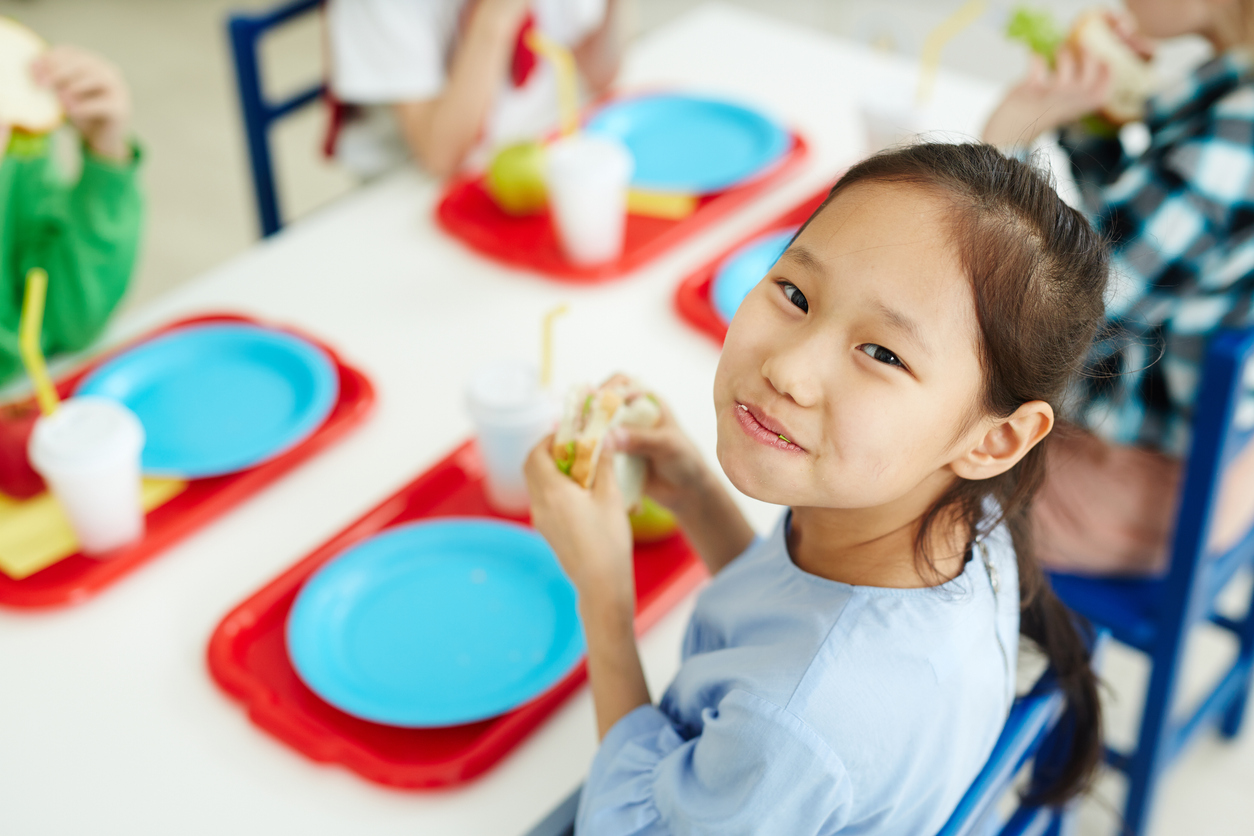The Elkhart school system in Indiana has begun providing Woodland Elementary students with take-home meals made from “rescued” foods. By working with the nonprofit organization Cultivate, Elkhart has successfully provided weekend meals for a small group of 20 students. They hope to expand their outreach in future school years.
Kids participating in the Cultivate program are given eight frozen meals every Friday to eat throughout the weekend. The meals consist of foods that were prepared in Elkhart school cafeterias, but never served.
“Over-preparing is just part of what happens,” Jim Conklin of Cultivate told local station WSB-TV. “Mostly, we rescue food that’s been made but never served by catering companies, large food service businesses, like the school system. We take well-prepared food, combine it with other food and make individual frozen meals out if it.”
A student services employee within the school district told the news station that a lot of food was being thrown out and wasted before Cultivate stepped in. Now, the organization picks up unused food three times a week to prepare the frozen meals.
Elkhart and Cultivate hope to expand their pilot program to other schools in the district in the near future. As long as there is food waste, there’s opportunity to feed hungry kids.
[fm_youtube url="https://www.youtube.com/watch?v=2fAPZjRnhFI"]People across the country see the benefit of employing similar systems in their school districts. It seems like a no-brainer.
@BirdvilleISD maybe we should look into this for the kids in need in our district.
— tracyfromfortworth🇺🇸🏴 (@booksandbeard) April 3, 2019
L.A. schools — listen up! Your citizens are demanding change.
They should do that here in Los Angeles, lausd wastes soo much food!
— CYN (@hiacynthh) April 3, 2019
If not, let’s start, Kentucky! Better late than never.
No matter where you’re from, this kind of program can drastically improve kids’ schooling experience. Hungry kids have a hard time learning.
The frozen rescued meals initiative is similar to the “share table” system many schools have put into practice. If students have untouched and unopened food items, they can leave them on the share table for their peers to choose from.
The goal is to reduce the amount of food waste in schools as well as end child hunger in America. That is definitely something we can get behind.
It’s kind of like a cafeteria potluck. Bring something, and leave with something.
What are some ways that you "Give Back" during the holiday season?
— MAGIC 106.7 (@MAGIC1067) November 20, 2017
There is a new trend happening in school cafeterias called #ShareTables! LISTEN HERE >> https://t.co/9EXFNdkLBz #MorningMAGIC @davidloleary @SueTabb & @KendraPetrone pic.twitter.com/75u0unO8Uv
Fruits, cartons of milk or juice, and bags of chips are perfect items to contribute to the share table. No, we don’t want any of your half-eaten sandwiches, Johnny.
Providing students with clear signage showing what is accepted at the share table, as this teacher did, can help young students understand what’s cool and what’s a no-go. Juice boxes: yes. Peanut butter: no.
Thanks to the hard work of @SpeechwithMissS and @Brecknock_SC, our Share Table will be ready to roll out to students next week- helping students learn one way they can reduce food waste and help others in need! 🍎 #sharetables #mifflinsd pic.twitter.com/Esiv9qQ34Z
— Lindsey Tinney (@LindseyTinney) February 27, 2019
It does seem like a common sense solution to both food insecurity and waste. You can truly kill two birds with one stone with a single table.
Offering share tables is a great start, to help fight #foodwaste, and #foodinsecurity in the same motion, but why is there push back? And why aren’t places like #NYCSchools implemented this? It seems like a common sense solution. #sharetables #schoolfood #foodaccess #NYUFA18 https://t.co/zeuJQNH23F
— Kristen Himmelberg (@kulinarykristen) October 17, 2018
Or, joining forces with a food-rescuing team like Cultivate can tackle the issue of food waste and hunger at its source. Remember, organizations like Cultivate only deal with untouched food. So, if you find a group repackaging leftovers — you should call someone.
[fm_youtube url="https://www.youtube.com/watch?v=IrdlJSwQIO4"]Lovin’ Spoonfuls, a Boston-based food rescue program, rescues fruits and veggies from supermarkets like Whole Foods. They then feed an estimated 30,000 people each week with the food they’ve saved.
See our program in action -- from a pickup at @WholeFoods #InkBlock to delivery at @WLPBoston in #BackBay. Thank you @NBC10Boston for highlighting how we're working to reduce #foodwaste and feed people in our community! https://t.co/I8KcSlOiql pic.twitter.com/IDuDpidZBD
— Lovin' Spoonfuls (@LovinFoodRescue) March 27, 2019
It’s comforting to know that corporations have started paying attention to their food waste. Pocket Gems works with Replate to rescue their uneaten food.
Mobile gaming company, @PocketGems, uses Replate as their food rescue service. Do you? #EveryoneEats #WeAreGems #FoodRecscue pic.twitter.com/LkM0q4QUgx
— Replate (@replateyourmeal) April 2, 2019
Just look at all the beautiful produce that would have been thrown out if not for the Hunger Network Food Rescue of Cleveland, Ohio. We’re speechless.
It was a spur of the moment two rescue day. #endfoodwaste #food rescue @HNFoodRescue pic.twitter.com/efwSc0dpui
— Shelli Smith (@SmithShelli) April 1, 2019
If food rescue and repackaging programs are instated in every school district across America, just imagine the amount of wasted food we’d save and mouths we’d feed. It’s a dream that can absolutely come true with some determination and hard work.

To learn more about Cultivate and their mission, check out their website. And research local food rescue groups in your area to get involved in the fight against food waste and hunger.

